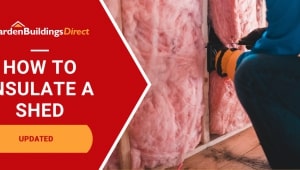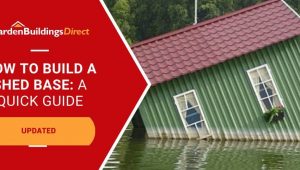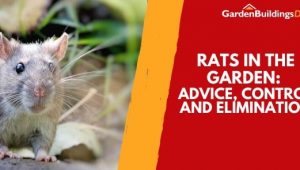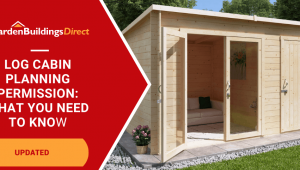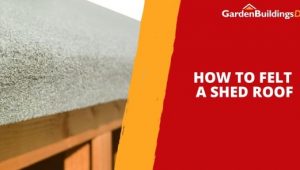Jump to:
Coming home from a much-needed trip to dead plants isn’t the nicest sight. Luckily, there are ways to water plants whilst on holiday and keep them healthy until you’re back. Some of the ideas below can help, whether you’re away for a few days or even for multiple weeks.
Group Your Plants and Prep Them
Grouping plants is where you place those with similar needs in the same area. For instance, moisture-loving plants like ferns, peace lilies, or salad leaves. Keep them close, so they can benefit from shared humidity.
Here’s a quick way to tell plants great for lining up side by side:
- Plants that like regular watering
- Plants that prefer shade or partial sun
- Potted plants that dry out fast
And what’s not:
- Plants that need full sun all day. Moving them might do more harm than good.
- Succulents and cacti. They prefer dry conditions and can rot in too much moisture.
Keep them separate if two plants have different watering or light needs.
Tips: Avoid leaving them in direct sunlight (e.g., on a windowsill) or exposing them to strong winds (e.g., in the garden). Always check the label or care guide when in doubt.
Use Self-Watering Spikes or Bottles
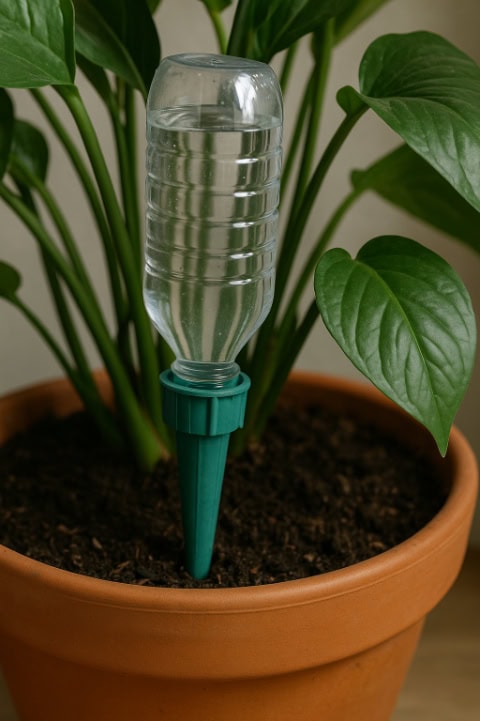
If you can’t group plants, give each its own water supply. Do this using self-watering spikes or bottles, which can be done DIY.
A clean plastic bottle will do: fill it with water and pierce a few small holes near the cap. Push into the soil at an angle, with the cap end buried. As the soil dries, it draws water from the bottle.
Or, use a push-in spike. There are two types:
- Spikes with bottles, featuring a thread to screw onto the bottle. Fill the bottle with water, attach the spike, and then insert it into the soil. The water drips out gradually as the soil dries.
- Standalone ceramic or porous spikes that soak water directly from a bowl or jug through a tube or wick. No bottle needed, but you’ll still need a reservoir nearby.
Test it 2 to 3 days before you leave to ensure the water is coming out slowly, not flooding the soil or getting stuck.
You might find that this solution is only good for a few days on large containers or especially thirsty plants. Larger bottles or a better method may be required.
Create a Drip System (Especially Useful in a Greenhouse)
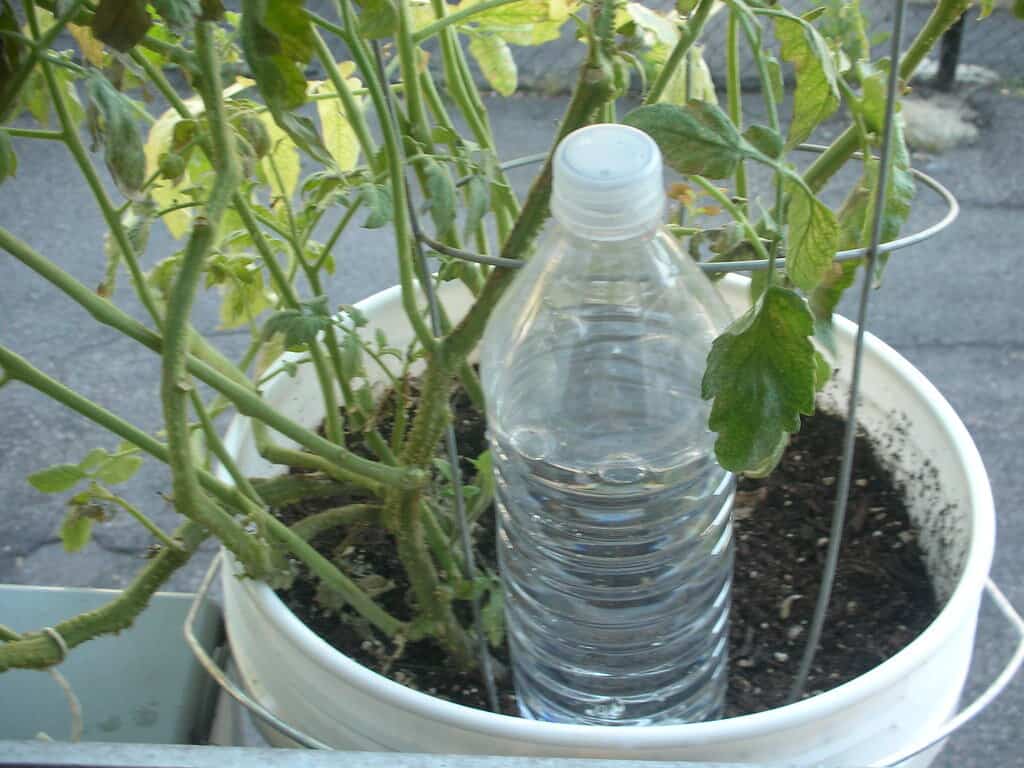
This watering technique works by slowly releasing water straight to the roots. It’s especially recommended if you have garden beds, raised beds, or large containers.
To set up your DIY drip system:
- Use a clean 1 to 2-litre bottle.
- Poke a few small holes (three to five) near the base using a pin or sharp nail.
- Bury the bottle upside down next to the plant, with the base sticking out so it’s easy to refill.
- Top it off with water and let it do its thing.
Going away for more than a few days? Place extra bottles across the bed to make sure the water reaches several spots.
Try Water-Storing Crystals to Water Plants While on Holiday
These aren’t actual crystals but small granules made from a type of absorbent polymer. You mix them into the compost before planting or work them into the top layer of soil. Water, and the ‘crystals’ swell up and hold the moisture, which then releases it back into the soil bit by bit. They look somewhat like a tiny, clear jelly when wet.
They won’t replace regular watering for a long trip, but they do help stretch the time between waterings. They’re helpful for short trips or as a backup alongside, say, a self-watering spike.
Note: Some older types of polyacrylamide hydrogels were found to degrade into acrylamide (a potential carcinogen), but modern products for gardening are considered safe.
Use Automated Sprinklers or Timed Irrigation Systems
Automated sprinklers are one of the most reliable (but costly) options if you’re going away for more than a few days.
These systems use a timer connected to a hose or irrigation controller to release water at set intervals. You can choose between:
- Oscillating or rotary sprinklers for lawns or wide garden areas.
- Drip irrigation lines or soaker hoses for beds and containers—great for conserving water.
- Greenhouse misting systems for maintaining both humidity and moisture levels in enclosed environments.
If you have a large number of plants or a lot of ground to cover, this is perhaps the most efficient way to make sure it all gets watered every day. Modern sprinkler kits can be connected to your Wi-Fi so you can adjust the times and watering duration from your phone. Many of them also have rain and moisture detectors so that they won’t water on wet days. It’s very convenient, but it will cost you a lot more than a hose pipe. Just make sure you connect it to a tap and turn the tap on before you leave.
Ask a Neighbour or Friend
Asking someone you trust is still one of the easiest ways to keep your plants alive while you’re away. Garden plants are easy for neighbours to check on. For indoors, whether your living room or potting shed, it’s best to leave a key with a friend.
This needs a bit of prep on your end, though, to make it less of a hassle for them. Leave a quick note if some plants don’t need as much water, and set things up so all they have to do is pour.
And don’t forget to return the favour, or at least leave a thank-you. A little effort goes a long way!
Round-up
There are plenty of ways to water plants on holiday, and we hope these tricks have made it easier for you. Even basic steps, such as grouping your pots or asking a friend, can do the job. Use what works best for your space, and combine methods if needed.
Get more watering tips here: How Often Should You Water Greenhouse Plants
